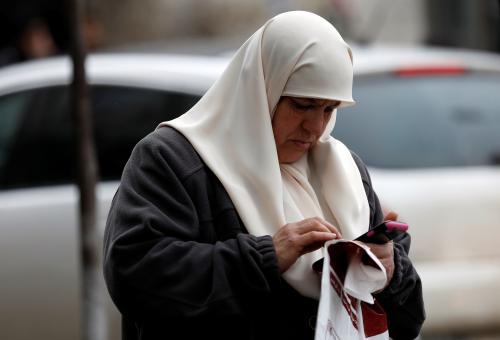More than half of the population of sub-Saharan Africa works in the agriculture sector, but most farmers in the region still do not have access to formal financial services. Limited access to these services makes it more difficult for farmers to take advantage of business opportunities, invest and save for the future, and insure against risks. To analyze this issue, on September 24, the World Bank released the report Digitization of Agribusiness Payments in Africa: Building a Ramp for Farmers’ Financial Inclusion and Participation in a Digital Economy. The report argues that digitization of agribusiness payments can help advance financial inclusion of farmers, analyzes the current status of digitization, and recommends key actions that can help accelerate digitization.
The authors write that, in 2017, 30 percent of adults in sub-Saharan Africa reported having received payments for the sale of agricultural products within the past year, and that 85 percent of these payments were received in cash only, rather than into a formal financial account. Figure 1 further details these statistics by country, showing both the proportion of the population receiving agricultural payments and the method of payment receipt.
Notably, the proportion of the population receiving agricultural payments is particularly high in Ethiopia, Madagascar, Rwanda, and Uganda, where over 40 percent of adults reported receiving payments for the sale of agricultural products. Among recipients of agricultural payments, the majority in all countries received payments in cash, rather than in a financial account. There is, however, significant heterogeneity by country: In Ghana, Kenya, Uganda, and Zambia, over 30 percent of recipients reported receiving payments into an account, while in Ethiopia and Madagascar, nearly all recipients reported receiving payments in cash. The report states that this heterogeneity is likely driven by differences in the extent of digital financial services available across countries and especially in rural areas.
Figure 1. Receipt of and channel for agricultural payments, by country (%)
Source: World Bank, Digitization of Agribusiness Payments in Africa: Building a Ramp for Farmers’ Financial Inclusion and Participation in a Digital Economy, 2020.
The report also finds that recipients of agricultural payments use formal financial institutions very infrequently for saving and borrowing, despite saving and borrowing more frequently than the rest of the population. In fact, only 17 percent of adults receiving agricultural payments used a formal financial institution to save money, and only 10 percent to borrow money (Figure 2).
Figure 2. Use of formal financial institutions among agricultural-payment recipients (%)
Source: World Bank, Digitization of Agribusiness Payments in Africa: Building a Ramp for Farmers’ Financial Inclusion and Participation in a Digital Economy, 2020.
These findings point to low levels of financial inclusion for farmers across the continent. The report argues that increased digitization of agribusiness payments can help advance financial inclusion, as well as enhance efficiency and transparency for agribusiness firms and improve the broader digital financial services ecosystem on the continent. In particular, the report finds that access to mobile money accounts is a key driver of the digitization of agricultural payments. The report further recommends that agribusinesses strengthen partnerships with digital payment service providers, which could, for example, allow agribusinesses and mobile money providers to negotiate better pricing structures through bulk payments to farmers. Additionally, the authors recommend that policymakers work to strengthen the rural digital financial services ecosystem by, for example, simplifying requirements and reducing start-up costs to become a digital financial services agent in order to increase the number of agents available in rural areas to convert e-money to cash and vice versa.
The Brookings Institution is committed to quality, independence, and impact.
We are supported by a diverse array of funders. In line with our values and policies, each Brookings publication represents the sole views of its author(s).








Commentary
Figures of the week: Financial inclusion of farmers in Africa
September 30, 2020